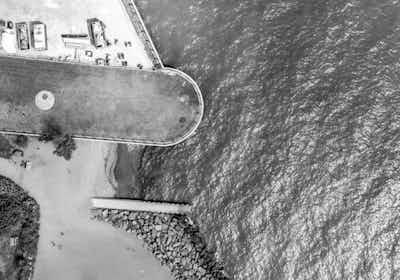There are more than 7.8 billion people in the world and population growth is showing no signs of slowing down.
On a global scale, the amount of air pollutants produced is near incomprehensible. In the United States alone, around 68 million tons of pollution was emitted into the atmosphere during 2020. In addition, odour annoyance is a major source of environmental complaints worldwide, accounting for over 60% in some countries.
It can be difficult to pinpoint the direct cause of air quality impact on citizens, or what caused offensive odours at their sites. For many types of emissions, the pollutant is invisible, which further complicates the process of identifying the source of the problem.
The role wastewater treatment plants and waste operations play in growing communities
Each day, domestic households produce 200-300L of wastewater per person on average. That’s not even factoring in solid waste.
Treating wastewater and managing solid waste are monumental tasks in their own right. Both industries are driven by processes that can have a strong impact on air quality in surrounding areas if correct mitigation strategies aren’t deployed.
For wastewater and waste management operators, changing weather conditions leading to air quality impact is an ongoing issue. Odour abatement is also still a challenge for waste operators despite a wide range of options. For many urban facilities, this is further complicated as communities continue to grow and gradually move within buffer distances around plants.
Furthermore, when air quality monitoring is necessary to support emissions mitigation – but isn’t implemented suitably – there can be various implications for facility operators and neighbouring communities.
An example of this is if a complaint about air quality or odour emissions is made, you may be unable to confirm or refute responsibility with defensible data.
High volumes of community complaints pose significant challenge for staff who are responsible for investigating each specific complaint and determining its source and validity. Complaints can severely damage an operation’s reputation in the community and social licence to operate.
So, why is it difficult to act on air quality monitoring data?
When air quality incidents occur, there needs to be a swift response to minimise impact. But if your plant doesn’t have the information you need to do this, or to even determine the root of the problem, making critical operational decisions becomes all the more challenging.
If unfolding issues are left unresolved for a prolonged period of time, there is also the risk that they will progress and worsen. Weather conditions can exacerbate this and the longer this goes on, the more troublesome they can become.
When operators are unable to take proactive and considered action based on accurate and current data, they may also walk into otherwise avoidable issues such as damage to their reputation.
In cases where air quality isn’t closely and effectively monitored, this could also negatively impact the liveability of surrounding cities and towns. If air quality is poor, nearby areas may become less desirable to residents or those looking to relocate.
What can real-time air quality monitoring systems achieve?
This is where proactive, real-time air quality monitoring systems are particularly helpful.
Real time air quality monitoring systems are typically deployed in industrial operations or urban areas to collect data on specific pollutants for compliance purposes or emissions mitigation.
Data can be used to pinpoint the source of existing problems, but to also help operators stay ahead and plan for periods of high weather and air quality risk.
If there’s a complaint about air quality in the community and it’s directed at a facility, the issue needs to be accurately diagnosed and efficiently rectified. However, acting on ambient air quality monitoring data is difficult without sufficient context. This is also resource-intensive and requires an understanding of where to focus investigations.
Reverse trajectory modelling is a proven way for a facility or government agency to work backwards and find the source of the issue. It uses advanced technology to complete this highly complex process relatively quickly, without compromising on effectiveness and accuracy.
Lower investigation times mean faster resolutions, which is better for operators, local government and the wider community.
Envirosuite’s proactive air quality monitoring software
Envirosuite’s air quality measurement solutions are designed to be user-friendly and practical, while still offering unrivalled scientific and technological excellence.
Whether you’re a specialist in the field or not, you can benefit from advanced air quality monitoring at your wastewater or solid waste treatment plant:
High-resolution forecasts of weather and air quality emissions
Maintain compliance for air quality emissions
Receive early warning of threshold breaches
Diagnose the source of problematic air quality and odour emissions
Confirm or refute responsibility of complaints with defensible data
Contact us to talk with our team about your requirements for air quality monitoring.
